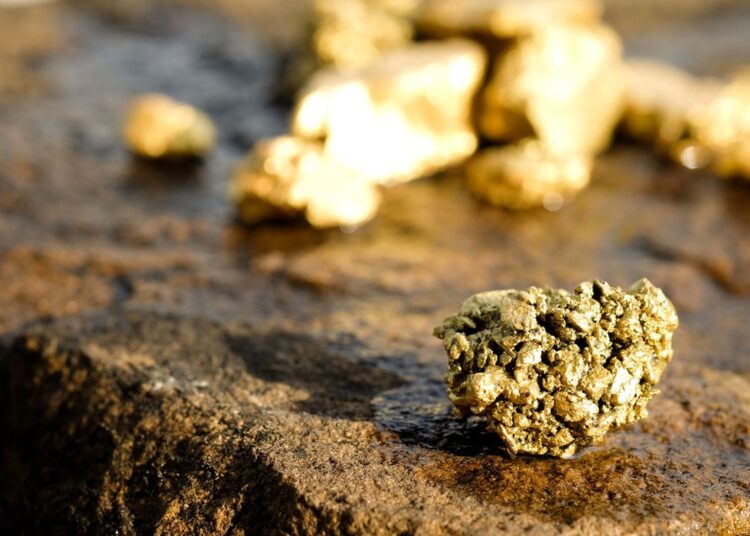While severely fighting illegal mining, the Cuban government announced new concessions for gold prospecting in the provinces of Sancti Spiritus and Camagüey, in a new bet on the mining sector as a possible source of income for the depressed state coffers.
The decision, made by the Executive Committee of the Council of Ministers and signed by Prime Minister Manuel Marrero, seeks to consolidate the exploration of this valuable natural resource, with a view to its future commercial exploitation.
Agreement 10086/2025, published in the Official Gazette, extends until February 2027 the concession granted to Empresa Geominera del Centro to continue geological research in the Macaguabo area, in the municipality of Sancti Spíritus.
The extension of the term, which initially expired in 2025, will allow further studies on gold resources in this region, which is considered one of the most promising in the country.
On the other hand, Agreement 10087/2025, included in the same Gazette, authorizes new geological investigations in Camagüey, another province with a significant history in mining production.
The works are located in the area called Alrededores Jacinto, located in the municipalities of Sibanicú and Guáimaro. They will be in charge of Empresa Geominera de Camagüey for three years, to verify past results and investigate new gold concentrations.
Requirements for the concessions
Cuban authorities emphasized that the concessions now granted must be governed by strict technical and environmental standards established in Law 76 “Mining Law” and its regulations.
In this regard, the companies that will carry out the investigations, both state-owned, must comply with several key requirements, among them environmental compliance, which requires guaranteeing that the prospecting work does not generate significant negative impacts on local ecosystems.
They will also have to carry out their work under the technical supervision of the National Office of Mineral Resources to ensure compliance with established standards.
In addition, they must implement modern technologies in their research to optimize the extractive processes and reduce operating costs, ensuring the sustainability of the projects.
Another requirement is contractual transparency, which includes respecting the terms and conditions established by the Executive Committee of the Council of Ministers.
Main gold deposits in Cuba
Cuba has several gold deposits that have been exploited or explored over the years.
Currently, under geological research, Macaguabo (Sancti Spíritus) has shown an area with high gold potential.
Historically known for its deposits of various minerals, El Cobre (Santiago de Cuba) is another auriferous location, together with La Demajagua (Isla de la Juventud), an international investment due to its extractive capacity.
The Australian mining company Antilles Gold, which has submitted several reports on its La Demajagua open-pit mine project, estimated possible millionaire gold and silver recovery rates in 2022. According to it, there is the possibility of extracting 7.7 million tons with an average grade of 2.9 grams of gold per ton, for an approximate of 720,000 ounces of gold.
However, no progress on the status of this prospecting has been made public.
For its part, the La Unión gold and copper prospecting carried out by Geominera Camagüey was concluded last year, as reported in February by the Cubadebate website.
There, they identified 9,359,631.8 tons of ore with a grade of 0.6267 g/t of gold, equivalent to 5865 kg of metallic gold. They also estimated 2082.97 tons of copper.
Due to the importance of this find, it was decided to move to geological exploration of the southwest part of the deposit and start immediately, said a note from the Geology Directorate of Minem.
The gold prospecting in the Melonera-Oropesa Strip, in the province of Villa Clara, carried out by Geominera Centro and started many years ago, was also completed.
These sites represent not only an economic opportunity, but also a technical challenge to maximize their sustainable exploitation.
Australian company announces discovery of high concentrations of gold and silver in Cuban mine
Illegal Mining: A Growing Problem
Despite government regulations for mining, illegal activity in this sector continues to be a significant problem in Cuba.
The phenomenon mainly affects rural areas, where small groups extract gold without authorization or adequate measures to mitigate environmental impact.
In addition, this informal activity hinders state control over natural resources and generates considerable economic losses, as authorities have lamented.
For this reason, the government has intensified actions to combat this practice through joint operations between law enforcement and mining authorities.
Last March, eight people practicing illegal mining in Jobabo municipality, in Las Tunas province, were arrested and placed under police investigation.
According to an official communiqué published in networks, the illegal miners were seized several electrical equipment and other accessories, with which they carried out “the illegal exploitation and trafficking of gold dust” that they extracted from the mine.
In other territories, such as Camagüey and Ciego de Avila, people have also been arrested in recent years for illegal mining activities.
International gold prices
In the international market, gold continues to be one of the most valuable assets due to its stability in the face of global economic uncertainties.
Currently, its price oscillates around US$1,950 per troy ounce, although this figure can vary according to factors such as interest rates, geopolitical tensions, and global inflation.
For Cuba, a country with economic limitations due to the U.S. embargo/blockade, the development of the gold sector represents a significant opportunity to generate foreign currency, according to authorities and experts.
However, according to analysts themselves, this will depend on the success in attracting foreign investment and guaranteeing efficient extraction processes.
Historical Profile
Gold mining in Cuba, despite its limited national socioeconomic impact, has a rich tradition bequeathed by its own history, which goes from the times of the conquest in the 16th century to the present.
Although the Cuban aborigines recognized the rivers as the ideal sites for it collection, it was not until the arrival of the conquistadors that there was a real mining activity in Cuba.
The beginning of gold metallurgy dates back to the end of 1512, in Bayamo, Granma province, with the construction of the first gold smelter in the colony, which was transferred in April 1515 to the city of Santiago de Cuba.
In 1542, the exploitation of gold in Cuba culminated and copper mining began in Santiago del Prado, today’s El Cobre, says researcher Roberto Díaz, from the Instituto Superior Minero Metalúrgico de Moa (Higher Institute of Mining and Metallurgy of Moa).
According to published studies, gold mineralization on the island is mainly located in a metalogenetic belt of approximately 400 kilometers, which extends from the southern part of Santa Clara, in the center, to the north of Holguin, in the east.










